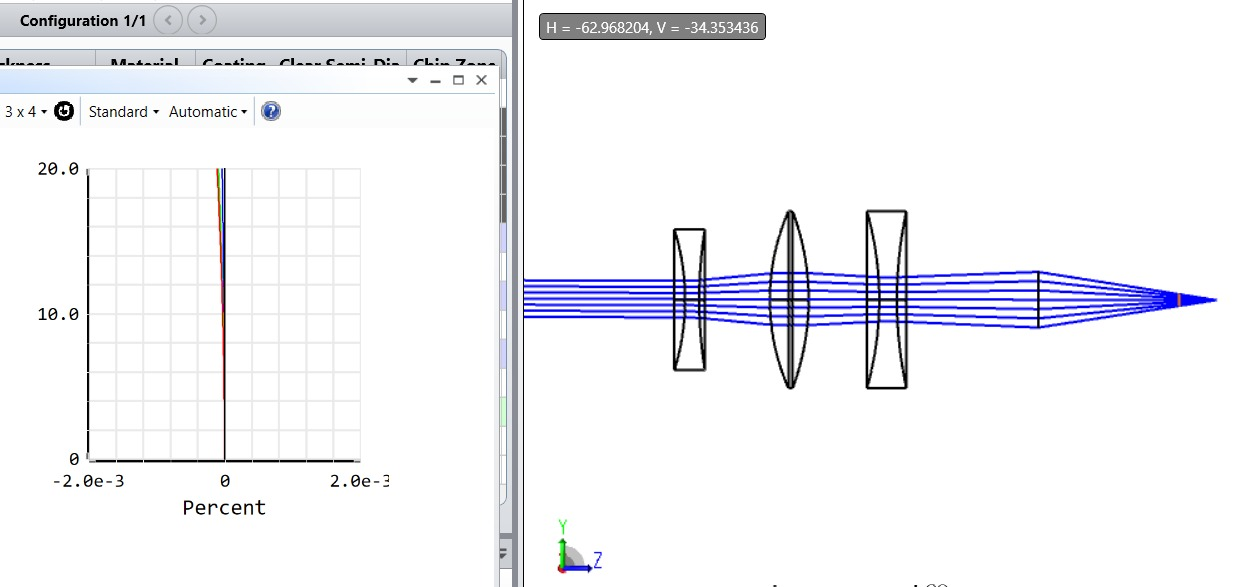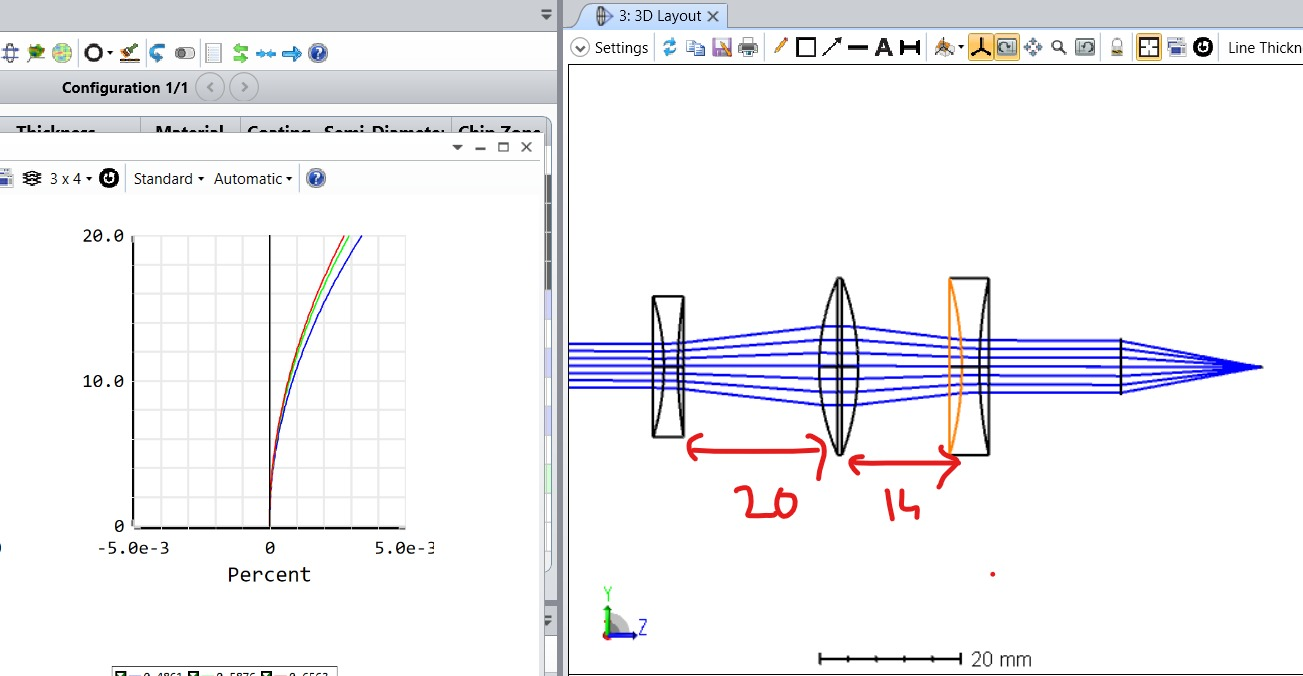Hi everybody,
I have come across an impass in zemax. My problem statement says that I have three lenses separated by some distances. I have to move the distance between these lenses. The problem that is occurring is "distortion aberration" in the system. I've tried to use some operand to reduce distortion by making the radius of curvature variables and now the distortion is absent in the system for a particular set of distances between the lenses. Now, when I am trying to move the lenses again, the distortion increases again.
Pictures are attached for your reference. One where distortion is zero and other when the distance between lenses have increased and the distortion increases simultaneously.
I request you to guide me so that I can move my lenses without getting distortion in the system.
Any help will be appreciated.
Thanks





